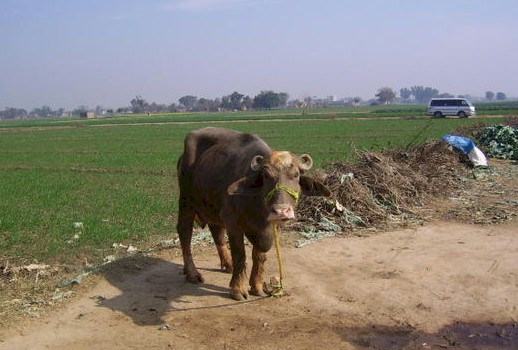 |
| Photo Source: Wikipedia.org |
The Nili-Ravi buffalo, a milk-type buffalo breed, can be traced back to the Indus River Valley civilizations when they were two separate breeds: Nili and Ravi. However, due to similarities in appearance, it became difficult to distinguish between the two, leading to their consolidation into one breed in 1950: the Nili-Ravi.
These buffalo are primarily found in the districts of Lahore, Sheikhupura, Faisalabad, Sahiwal, Multan, and Bahawal Nagar in the Punjab Province. They are black, with males typically weighing 800 kilograms at maturity and females weighing 525 kilograms.
The Nili-Ravi buffalo has a distinctive wedge-shaped massive frame, small curly horns, and wall eyes. They often have white markings on their forehead, face, muzzle, and legs, and a white switch of tail. These buffalo are highly desired and are popularly referred to as "Panj Kalian." They have a strong, large udder and are generally docile. On average, they reach maturity at 30 months for males and 36 months for females, and have good longevity in production. However, white markings that extend above the hock and knee, as well as over the neck and body, are considered a serious disqualification.

